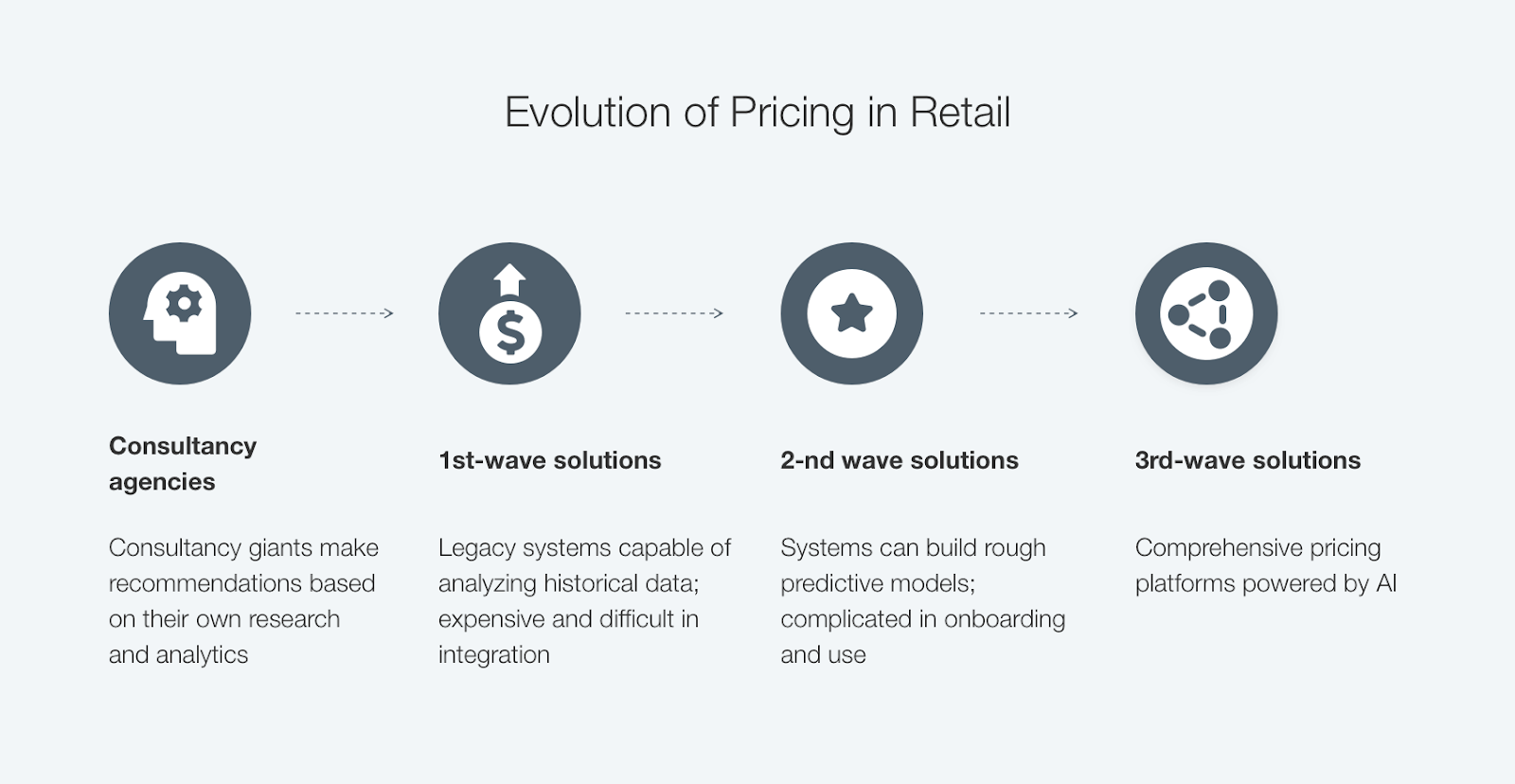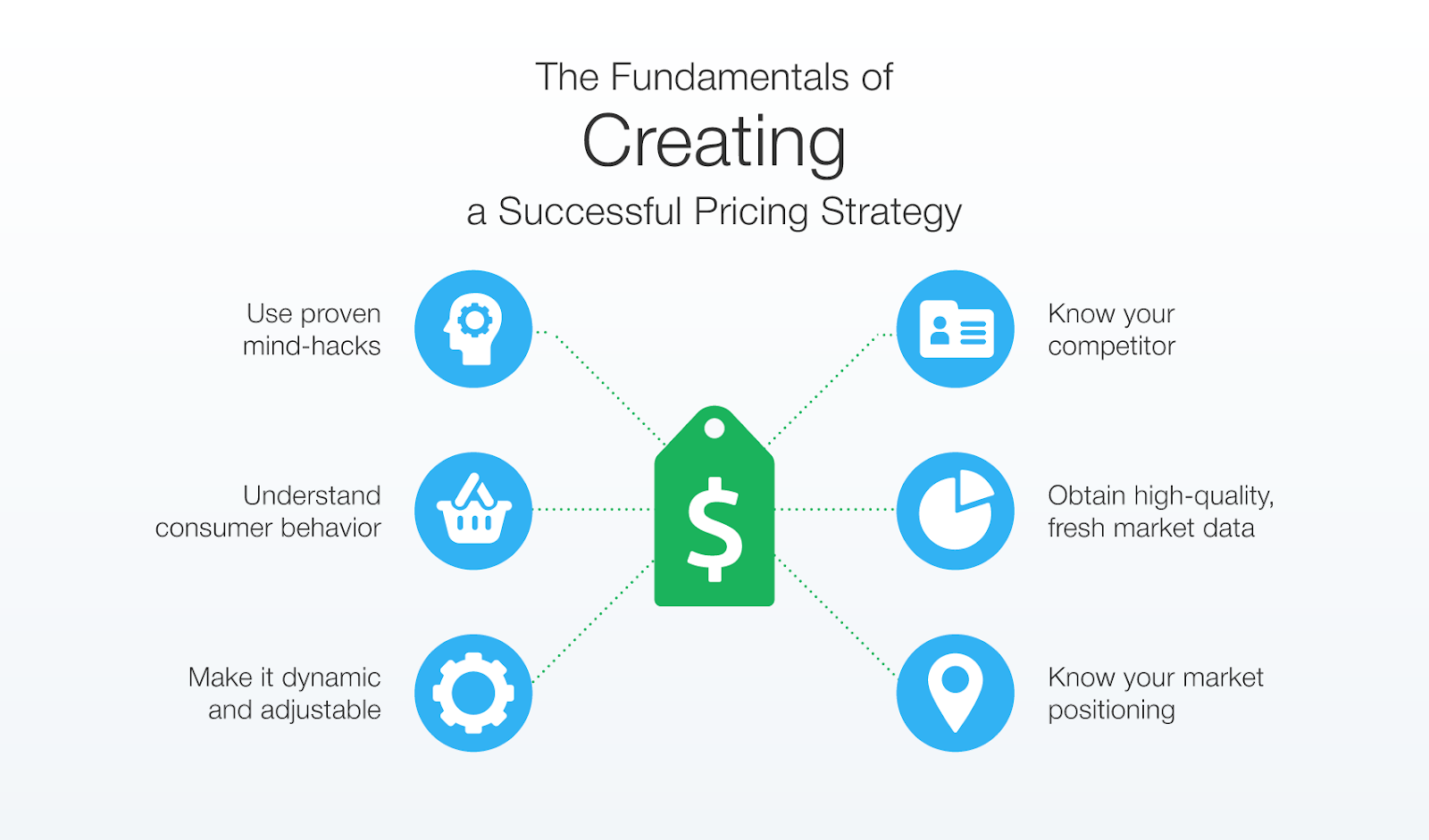Content navigation:
- What is pricing simulation?
- Pricing simulations for beginners
- Benefits of price simulations
- Leave price simulations to AI
What is pricing simulation?
Pricing Simulation is an AI-driven process of testing various pricing scenarios to suggest the most sustainable and cost-effective way to achieve business goals. In most cases, historical sales data along with the particular business goals and constraints serve as input data which is then processed by the third-wave pricing software algorithms.
The concept of pricing simulation is closely linked with an idea of price testing. Both concepts deal with the same essential categories, like 'price point' or 'demand elasticity', and help retailers to reach similar or even the same business goals. At the same time, there is also a significant difference between price simulation and price testing. In most cases, pricing simulations help to imitate the impact of particular price changes without applying a new price in real life. In contrast, price testing mostly implies the real changes to price.
Pricing simulations for beginners
For a long time, pricing simulations remained a privilege of market giants as significant time, human, technical, and financial resources were required to predict the impact of particular price changes. To make corresponding calculations, consultancy agencies were hired even though the simulations they delivered were limited in scope and often not accurate enough.

In case of both consultancy agencies and early in-house pricing solutions, the simulations relied on one or several methods of testing in statistics. The two most common approaches included:
-
Bootstrapping. The method implies random sampling with replacement. Bootstrapping enables assigning various measures of accuracy (e.g. variance, prediction error or confidence intervals) to sample the estimates.
-
Monte Carlo method. Algorithm enabling continuous random sampling aimed at obtaining numerical results. To put it simply, Monte Carlo simulations are using randomness to solve the tasks which are likely deterministic in their essence. In retail business, the Monte Carlo method could be used to optimize pricing, promo, stock management or other domains of operations.
These and other statistical methods have not changed since the early price simulations were crafted by consultancy agencies and the first-wave pricing solutions. What is different is that the AI revolution of the mid-2010s has ruined giants’ monopoly on innovation and made effective and safe price simulations affordable for every retailer.
Benefits of price simulations
Right pricing decisions are crucial to sustain the retailer's financial health. Yet, even in the age of data-driven personalization, many retailers tend to disregard the importance of an integrated pricing policy. One of our entries highlights the problem particularly well demonstrating the need for creating a successful pricing strategy. Today, the lack of strategic approach to pricing at the portfolio level remains a crucial factor undermining sustainability in retail business.

Then, when a retailer realizes the importance of a comprehensive pricing strategy, comes the problem of choice. Without being tested in a safe mode, the rough implementation of a pricing policy could be as devastating as the lack of any strategy at all. And that's where pricing simulations can help. Here is how:
-
Find optimal pricing decisions in a proactive way. Competera's Sandbox for pricing simulations offers a range of modules enabling commercial and pricing teams to test various scenarios including predefined strategies and custom ones with a retailer's own specific constraints and targets.
-
Identify KVCs and KVIs flawlessly. The record shows that retailers often tend to misidentify the key-value categories and items in their portfolio. And that's where price simulations could help as advanced pricing engines could simulate the impact of a price change on demand for all products in the portfolio. What it means is that a retailer gets a real picture of how particular products generate value. After KVCs and KVIs are identified, a retailer can protect them to secure the crucial financial metrics.
-
Finding implicit cross-dependencies between products within the portfolio. Simulating various pricing scenarios reveals even the most discreet dependencies between different product sales. Being aware of such cross-dependencies, a retailer can prevent product cannibalization and maximize revenue.
Leave price simulations to AI
Genuinely impactful and relevant pricing simulations rely on thousands of data points processed by advanced machine learning algorithms. Simulating a potential impact of a new price per single SKU takes manager hours of work but, eventually, it would make little sense as such simulation would disregard the vast amount of cross-dependencies within the portfolio. So, why not leave price simulations to advanced pricing software?
Every provider offers its own approach to price testing. As we've mentioned above, Competera pricing platform is powered with a special Sandbox feature helping to test various pricing scenarios including predefined strategies and custom ones. We believe that pricing simulations are genuinely effective exceptionally in case of being tested on portfolio level. Such an approach helps to identify all kinds of cross-dependencies within the portfolio, sustain potential cannibalization effect, and identify the key value items so they can be protected.
Even if you test the price for a new product, Sandbox can generate highly-accurate results based on the historical sales of similar products. Here's a fact: a manager can consider only 3 pricing and non-pricing factors at once while pricing software can process up to 60 factors. That's how, with the Competera pricing platform, pricing teams get the market predictions of 90-98% accuracy being able to focus on genuinely important strategic tasks instead of making inefficient calculations. A recent example: Competera helped a leading Eastern European apparel retailer Intertop to reach the point of 10.3% gross profit saving with repricing time reduced to only 15 minutes.
FAQ
Pricing models are systematic approaches used by retailers to set prices. The popular examples of pricing models include the cost-plus model, value-based pricing, performance-based pricing, competition-based pricing, and others.
Pricing matrix is used to visualize costs, margin, mark-up, and other factors impacting pricing policy. The pricing matrix is used to set prices both attractive for customers and financially healthy.






